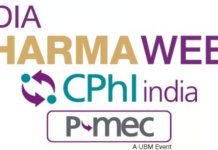New Delhi, January 28, 2017: (UNI) Sri Lankan scientists report having developed a simple way to make a benign, more efficient fertilizer – described as nano-particle fertilizer – that could contribute to a second food revolution across the globe.
The research by scientists from Sri Lanka Institute of Nanotechnology and Cambridge University published in the Journal ACS Nano says that the non-particle fertilizer will not only be more efficient but would also be environmentally friendly.
The “Green Revolution” of the 60’s and 70’s has been credited with helping to feed billions around the world, with fertilizers being one of the key drivers spurring the agricultural boom.
But in developing countries, the cost of fertilizer remains relatively high and can limit food production.
Farmers often use urea, a rich source of nitrogen, as fertilizer.
It’s flaw, however, is that it breaks down quickly in wet soil and forms ammonia.
The ammonia is washed away, creating a major environmental issue as it leads to run-off of nutrients into rivers and other bodies of water causing a dense growth of plant life in water ways.
It ultimately enters the atmosphere as nitrogen dioxide, the main greenhouse gas associated with agriculture.
The fast decomposition of urea also limits the amount of nitrogen that can get absorbed by crop roots and requires farmers to apply more fertilizer to boost production.
However, in low-income regions where populations continue to grow and the food supply is unstable, the cost of fertilizer can hinder additional applications and cripple crop yields.
Nilwala Kottegoda, Veranja Karunaratne, Gehan Amaratunga of Sri Lanka Institute of Nanotechnology and colleagues wanted to find a way to slow the breakdown of urea and make one application of fertilizer last longer.
To do this, the researchers developed a simple and scalable method for coating Hydroxylapatite (HA) nano-particles with urea molecules.
HA is a mineral found in human and animal tissues and is considered to be environmentally friendly.
In water, the hybridization of the HA nano-particles and urea slowly released nitrogen, 12 times slower than urea by itself.
Initial field tests ona rice farms showed that the HA-urea nano-hybrid lowered the need for fertilizer by one-half.
The researchers say their development could help contribute to a new green revolution to help feed the world’s continuously growing population and also improve the environmental sustainability of agriculture. –United News of India






















